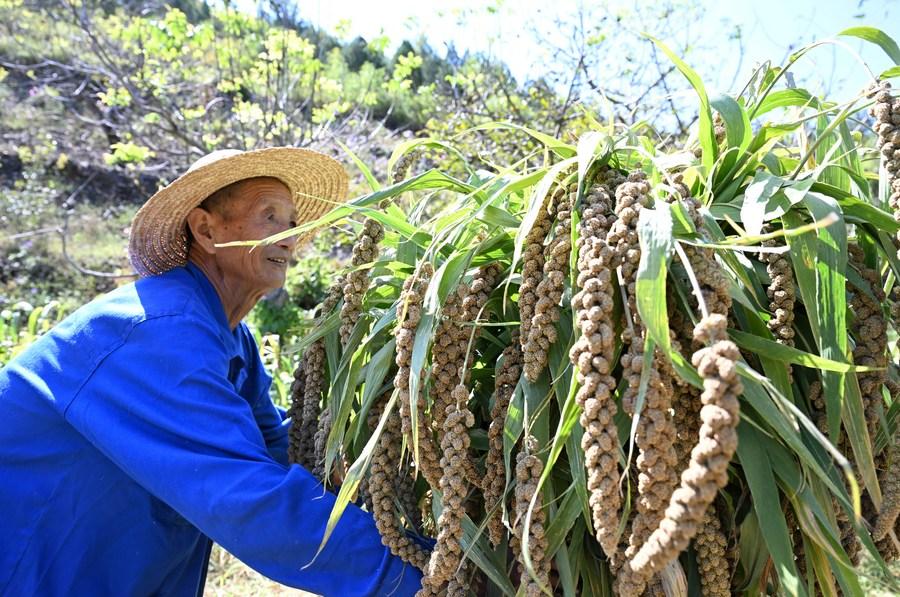Chinese scientists decipher genome secrets of foxtail millet
 0 Comment(s)
0 Comment(s) Print
Print E-mail Xinhua, June 10, 2023
E-mail Xinhua, June 10, 2023

A villager works in a millet field in Nihe Village of Luozhuangzi Township, Jizhou District, north China's Tianjin, Sept. 21, 2022. [Photo/Xinhua]
Chinese scientists have made a new breakthrough in the graph-based genome research of foxtail millet, which will facilitate rapid breeding of the crop and help ensure world food security.
The new study, conducted by an international team led by scientists from the Institute of Crop Sciences of the Chinese Academy of Agricultural Sciences (CAAS), was published online in the latest issue of the academic journal Nature Genetics.
Diao Xianmin, leader of the research said that foxtail millet is one of the oldest domesticated crops in the world and a staple crop in the formation of the Asian agricultural civilization and it held a dominant position in the Chinese agricultural system before the introduction of high-input agricultural practices like irrigation and chemical fertilizers.
The crop possesses several favorable traits, including high photosynthetic rates, efficient water utilization, and strong environmental adaptation, Diao added.
Michael Purugganan, a professor at New York University and the study's co-senior author, said foxtail millet is considered to be the foundation for early Chinese civilization. Moreover, because it is a crop that can grow across a wide range of environments, including arid lands, it has the potential to be important for food security under climate change.
However, scientists previously lacked systematic basic research on the genome of foxtail millet.
Researchers selected 1,844 varieties of millet and performed large-scale genetic studies. This study provides better understanding of the domestication and improvement process of foxtail millet, the genetic basis for important agricultural traits, as well as the methodology for large-scale data-assisted plant breeding, said He Qiang, the first author of this study.
This achievement will pave the way for the next generation of large-scale germplasm utilization and functional gene mining for future breeding. By understanding the comprehensive set of genomic variations, scientists will be equipped with superior genetic tools to pursue biological research and breeding of foxtail millet, said Diao, adding that the research will also offer insights for other crops to enhance global food security.
This work has not only offered new insights into the population structure of foxtail millet germplasm, and identified an ancient, more environmentally adaptive subgroup, but also systematically studied the domestication and improvement of foxtail millet, identifying numerous variations related to domestication and breeding selection, said Han Bin, an academician of the Chinese Academy of Sciences (CAS).
Jing Haichun, a researcher with the Institute of Botany of CAS, said that foxtail millet is suitable for arid and semi-arid areas, like many places in Africa, and convenient for planting. This research may help provide a Chinese solution to cope with climate change and ensure global food security.






Go to Forum >>0 Comment(s)